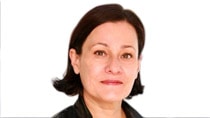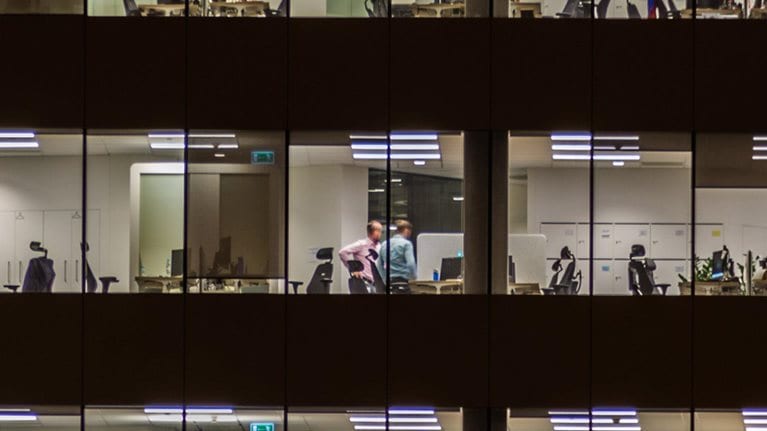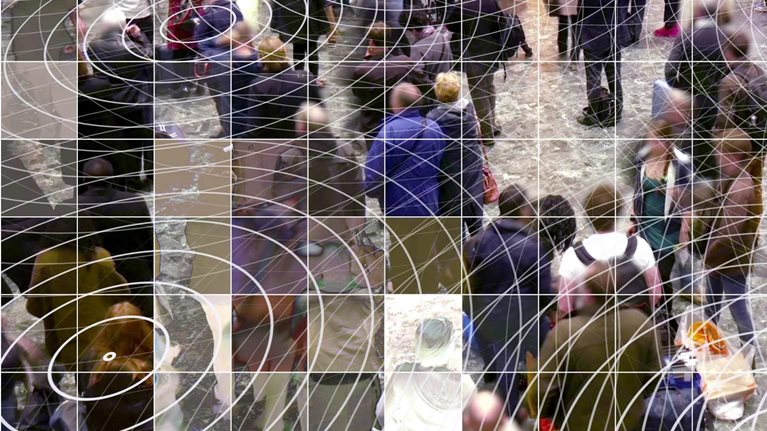Since 2009 Françoise Mercadal-Delasalles has been the group head of corporate resources and innovation at France’s Société Générale. In that role she oversees all group information technology (IT), purchasing, real estate, and shared resources. In this interview with McKinsey’s Nicolas Maechler, she explores the opportunities and challenges in developing an “internal” customer-experience sensibility that extends seamlessly from the employees who work inside large organizations out to its frontline employees and then to customers.
Stay current on your favorite topics
McKinsey: How did you come to realize that customer experience would be a priority for your organization within Société Générale?
Françoise Mercadal-Delasalles: In terms of our global strategy, it was a goal for the group for a long time as part of our thinking about client relationships. But the question we’d been asking ourselves was how to actually do it in the real world. As you know, banks are embedded in a challenging global climate and their image suffered in the last years. It was a real necessity for us to renew the relationship with our clients, so this subject has been at the heart of the transformation of the bank for five or seven years now.
McKinsey: Why would customer experience be important to you as someone at the head of a large internal organization, since your entity is not directly in touch with the bank’s customers?
Françoise Mercadal-Delasalles: I’d make two points in response to that. First of all, you know that IT or digitalization today is at the heart of the relationship with the customer, so when you are supervising IT, you have to be sure to question the way your clients are using the bank through IT.
The second point—and this is very important—is we didn’t invent this idea of “internal” customer service ourselves. We learned that if you want your front-end employees to be very good at the relationship with their clients, then the core of the company, including the support functions, in particular, has to be very good with the front. There has to be symmetry. So we realized that if the whole company, including the support functions and—especially IT—wouldn’t really change its way of viewing the service relationship, with either external or internal clients, we wouldn’t move very fast even if frontline employees were making a tremendous transformation.
McKinsey: So to be good with customers requires the organization to be at its best internally in terms of services provided to employees.
Françoise Mercadal-Delasalles: Exactly. It’s a global value chain to serve the client, and we have to be very good in the same mind-set from the front to the back end of the processes.
McKinsey: How did you go about trying to make the concept practical?
Françoise Mercadal-Delasalles: We needed to find a concrete and strong methodology to capture the experience of the customer—the user of the service. What is important is to understand that any user of a service, whether internal or external, wants the service to be real-time, efficient, quick, simple to access, and, if possible, nice.
In this journey of transforming yourself, probably the most difficult part is to start to understand what the problem is. And our methodology enabled us, first of all, to divide our services into a number of concrete user journeys, then to go and capture their satisfaction through surveys, and then deepen the understanding of the different pain points. What is so interesting in this methodology is that you don’t start your transformation from the usual point of view—you start from the point of your user. You start seeing the problem differently: for us that was a major discovery. We put ourselves in the shoes of our customers to really understand what they wanted from us, and then bring solutions.
McKinsey: The number of different users within the bank must have made it complex. Weren’t there too many journeys to consider?
Françoise Mercadal-Delasalles: That’s always the most difficult part. When you sell products or services outside, I think it’s easier to design the different user journeys. When you are an internal service, first of all, the majority of your people don’t look at themselves as running a service, but more as part of a large department. Our first job has been to segment these internal relationships into separate user journeys. We agreed at the beginning of the transformation to limit the number of journeys to 20 or 25 or we wouldn’t be able to do anything else.
This was the beginning of the cultural transformation of the entity, in fact. That’s why I’m saying it’s so important to start with that. Once you shift the vision that your people have of what they are doing and they really understand that, yes, they are serving customers, then you have to accept the judgment, let’s say, of appreciating the quality, efficiency, and rapidity of the service you are providing your customer.
McKinsey: How did you distinguish between the sort of regular users of everyday services of the bank and decision makers. Did you treat the groups differently?
Françoise Mercadal-Delasalles: It was definitely visible in the survey we did. We made a number of categories, including day-to-day users, and decision makers or users of advanced services (like development teams, for example), but what was interesting was that these special users themselves were day-to-day users of a computer, a building, or lifts, so even then, they were also consumers of our services. I kept repeating that if these users were not happy with our day-to-day services, they couldn’t value globally what we were doing.
McKinsey: What were the most revealing findings?
Françoise Mercadal-Delasalles: Well, what really struck all of us is that the results were quite challenging. We already had, of course, quality measures: global surveys measuring customer satisfaction. And our ratings were between 6.5 and 8.0 out of 10.0, so we were relatively happy about this because we were pretending that it was not bad at all, in particular, for internal services. And when the results of this survey came, which were detailed in our 22 user journeys, each divided into different subservices, the scores were showing us we clearly had room to improve across most journeys.
McKinsey: So what did you do?
Françoise Mercadal-Delasalles: We looked in detail at the results in order to really be able to touch the pain points people were feeling, because if you stay at a very conceptual level, you never take any action. What really changes the feeling people have about the services you are giving them is concrete actions against their pain points.
I also used these results as a way to move everyone in our management team, because they really then accepted that we definitely had to do something, to do something real—that there was an urgency to innovate.

The CEO guide to customer experience
McKinsey: What initiatives did you pursue in response to your findings?
Françoise Mercadal-Delasalles: We spent some time to really define what would be the best initiatives we should pursue to improve ourselves. There were a lot of areas where we could have started, and, after a while, we decided to deep dive, again, on real problems.
To renew a computer in this bank, for example, required waiting more than 30 days. So moving this indicator could be a real game changer, even if it might seem to be a small problem. If you find a solution, you really change the way people look at you. Also, this is something that is sufficiently ring-fenced to be able to solve it. We put in place a start-up team to redesign the journey. We empowered the team to really go as far as they could and to disrupt all the processes that are in place today in order to really solve the problem.
After two months they came back with a 1-day process instead of 30 by completely redesigning the old processes. It had a tremendous impact in the group because we showed that it was possible.
McKinsey: This is quite impressive—I imagine you are now scaling that?
Françoise Mercadal-Delasalles: Yes. The idea is to scale at the company level to spread the methodology, which is not so easy because, again, it’s a challenge to the way we generally think of solving problems. It’s starting with seeing the problems from the user’s eyes, and then solving them in a different manner. So there are two important things to note: to detect the problems by thinking of them as mini-journeys, from the standpoint of the user, and then solve the problem in a start-up mode.
McKinsey: What are the challenges you see?
Françoise Mercadal-Delasalles: The cultural resistance should not be neglected because putting a start-up in place means a number of different things. First of all, it means you have to detach your very good people from their regular activities to the start-up, and if you don’t do that, you will never get to the answer for the problem. There is, of course, at first a resistance—managerial resistance, team resistance. Second, you have to give autonomy to the start-up, which is, again, very contradictory to our traditional way of managing people.
And then, in the end, what’s quite difficult is to reconnect the start-up with the global run of the operations because maybe they can invent something really nice, smart, and so on, but if you can’t bring it back in the company to really transform it, then well, you are very happy, you have a very nice start-up, maybe you can create a new business, but you don’t transform the company. So this is a very important point.
McKinsey: How do you maintain the focus on customer experience today?
Françoise Mercadal-Delasalles: To be honest, as we are an internal service, it is difficult to have a permanent structure to look at customer experience. We are looking at the best way to renew the surveys—shortened versus what we did at the beginning—but, at least, we measure our progress on the different transformations that we started. We absolutely need to do this.
But I have to be frank: perseverance is important. When you are an internal service you are not naturally challenged by your own top management in the user experience of your internal customer. Of course, top management is rightfully turned toward the external client first and thinks of the internal one less often. However, this concept of symmetry of attention is something that really got our attention in this entity, and we really understood that we have to go in that direction, and now, after seeing the results, when I explain this direction to the board of the bank, they see it’s worth the effort.



